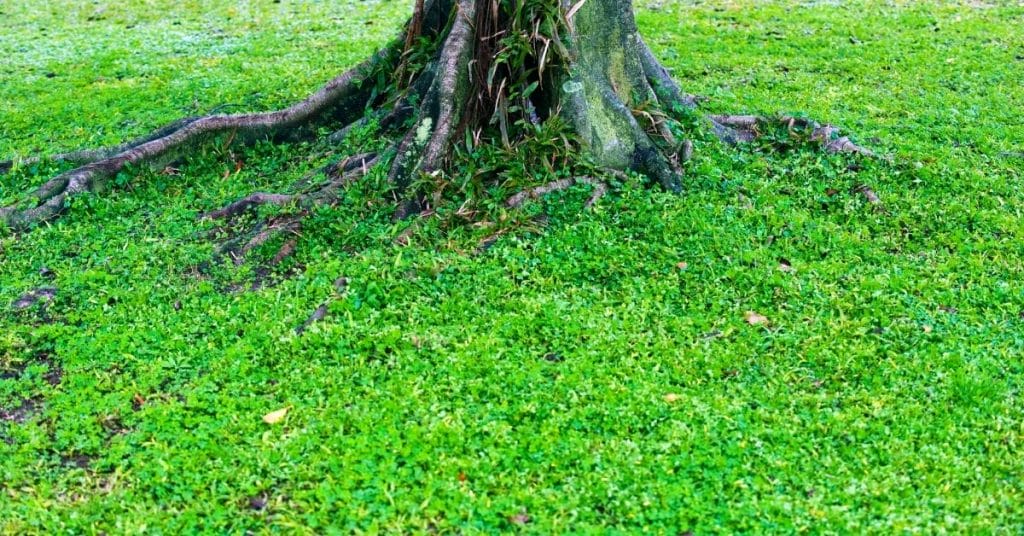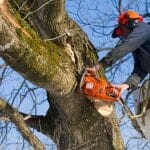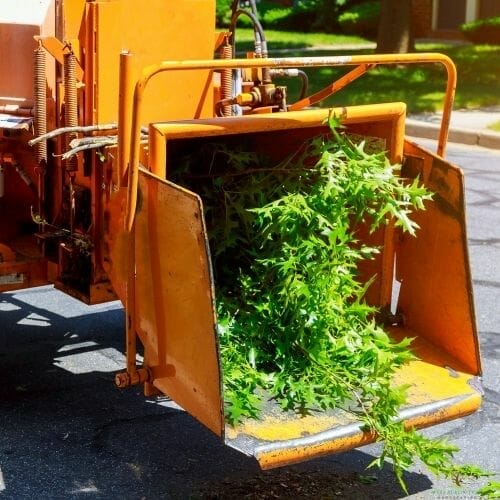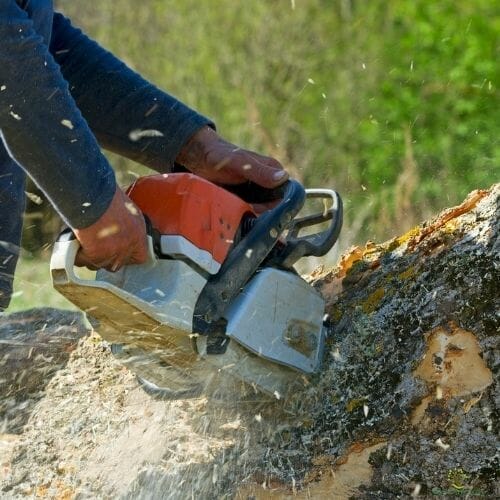Tree Removals With Roots In Austin
When the chainsaw stopped, you assumed you’d finished with that tree. Not so fast, tree roots will still be an issue. The roots of trees, on the other hand, are a totally different beast. You may need to hire expert assistance depending on the size of the tree or the purpose for the removal.
We’ll go over everything you need to know about removing tree roots, including the situations you may encounter, the tools you can use, and even when you should put down the trowel and seek professional assistance.
The most reasonable explanation to remove tree roots is if you have a stump in your lawn that acts as a reminder of a once-thriving tree. And, like the rest of the tree, you require its clearance for various reasons.
However, this isn’t always the case. You could wish to keep the tree but get rid of the bothersome roots that are splitting your walkway or clogging your sewage line. Whatever the case may be, we have you covered. So let’s get this party started.

Getting Rid of Tree Roots
Pulling out tree roots, especially if it was a large tree, can be a challenging task. Its buried root system can reach a depth of 20 feet, and in the correct conditions, much beyond. In most circumstances, you have three alternatives for removing tree roots that remain after a tree has been cut down:
- Remove the roots physically
- Chemicals can be used to treat the roots.
- Seek the services of a tree stump removal expert.
Remove Tree Roots Manually by Yourself
Physically removing a tree stump is the quickest, but most time-consuming, method of removal. Taking away tree roots and stumps on your own usually requires either digging them out or using a stump grinder. It is very dependent on the type and size of the root systems. Smaller roots are better for this type of DIY project.

Digging Out Tree Roots
You’ll need a shovel, trimmers, a hoe, and perhaps a root saw to pull up the roots.
For starters, call the utility company to ensure that you are not excavating near any water, sewer, or other underground systems.
To expose the roots, shovel out the soil around them using your shovel. Pull out any loosened roots until there are none left.
Cut through the ground surrounding the ones that are still intact with your trimmers. Cut as far away from the root ball as possible.
Then, with the grub hoe, dig out the severed roots. Unless you can, pull out a few more by hand.
Push the stump backward and forward to loosen the roots, then cut and pluck the roots until the root ball can be removed from the soil.
If the roots are too strong for the loppers, a root saw may be required.
Using A Stump Grinder To Remove Tree Roots
Digging up tree roots can be problematic in some circumstances. However, there is another way to manually remove them, which is to deploy equipment. Stump grinding a bothersome tree stump is a lot of labor, but it’s a quick way to get rid of it and make some new wood mulch in the process.
If you apply this method, you’ll need a chainsaw, a shovel, and a stump grinder, which you may rent. Renting one costs between $100 and $400 on average. They’re available at local home improvement retailers like Lowe’s and Home Depot. Alternatively, you can hire one from a company like Sunbelt.
Because of the debris, it’s critical to put on the proper protective gear. This includes wearing slacks, a long-sleeved shirt, and protective headgear and eyewear to completely cover your body.
When you’re ready to get started, start by trimming the trunk as close to the ground as possible with your chainsaw. Next, remove any rocks or debris from the area surrounding the trunk that could harm your grinder. After you’ve prepared the trunk and roots, you may drive the grinder onto the stump and begin grinding it down.
You’ll grind down anywhere from 2 to 4 inches or more, depending on the size and placement of the tree. Use your shovel to dig up tree roots that were attached to the trunk after you’ve finished this.
After you’ve finished the procedure, it’s time to treat the damaged area. You can do this by raking or shoveling the loosened wood pellets onto the stump’s location. Add dirt and grass seed if it was in a grassy area. If not, a mulch might be used to assist cover it. Continue to inspect and treat the hole until it becomes a natural part of the landscape. Read more to learn about the cost of tree stump removal in Austin.

Treat The Roots With Chemicals
If you want to treat the tree’s roots, you can use a chemical herbicide, which works quickly to remove roots, or you can use rock salt, which is more natural but takes longer. Epsom salt or another more concentrated version can also be used. Table salt will not suffice.
Using A Chemical Compound To Remove Roots
You’ll need a chainsaw, a water hose, a garden sprayer or paintbrush, and glyphosate herbicide that have at best minimum 41% active component concentration.
Once you’ve gathered everything you’ll need, make a fresh incision across the tree stump with the saw and wet the tree’s outer layer (just under the bark). The water will aid in the herbicide’s distribution to the tree roots.
Next, make a 50/50 mixture with the glyphosate herbicide and water, and soak the external layer of the tree stump with it using your garden sprayer. Make sure the solution doesn’t get on the grass or any neighboring plants.
You only have to wait once the chemical treatment has been administered. The tree roots will die off completely after around two weeks.
Remove Roots With Rock Salt
The work will take a couple of months and a few applications to complete. You’ll need to have a drill, rock salt, and water to get started. Drill many three- to four-inch deep holes in the tree stump. Drill holes in any visible roots that you see on the ground.
Fill each hole thoroughly with rock salt, then add just about enough water to cover it without causing damage to the surrounding flora. Do this at least once a month. The rock salt will dehydrate the roots, and your tree roots should die within several months.
Hire A Professional
You may wish to contact a professional tree contractor to remove your tree stump for a variety of reasons. If you don’t want to deal with the physical labor of digging or grinding the stump yourself, or if you don’t want to wait weeks or months for it to be gone completely, it’s a smart idea to hire a professional. In many circumstances, if you have a tree professionally removed, you can also have the stump removed for an additional price by the same firm.
Bates Hite, the owner of Tree Stump Masters in Atlanta, says he’s seen people do all kinds of strange ways to get rid of tree stumps, like lighting them on fire with charcoal. He further advised that the stump grinders available for rent at your local home improvement store are insufficient for larger roots.
“On a huge tree stump, you probably can’t afford a big appropriate piece of machinery to get the job done right.” He stated, “You need to get deep, and you need a massive machine.”
Depending on the size and location of the tree stump, the cost of tree root removal by a professional tree service can range from $250 to $350. Read to learn more about tree stump removal & grinding services in Austin.

Removing Tree Root Without Endangering The Tree
You may enjoy your garden’s tree, but despise the roots that are tearing up your sidewalk or clogging your plumbing. So, what are your options for dealing with them? Is it possible to get rid of these roots without hurting your tree?
Yes, this is the case. You can prune the roots back and take steps to prevent them from reappearing in undesirable places. A water hose, hand trowel, wheelbarrow or tarp to temporarily place the earth, root saw, and material to form a root barrier are all required first (plastic, metal, or concrete).
Starting by wetting the ground with your hose once you’ve gathered your goods. The ground should be wet but not waterlogged. After that, loosen the dirt with the hand trowel and feel out the roots. Place the soil in the wheelbarrow or on the tarp that is surrounding the roots. It’s best to do this using your hands.
Cut the roots with your root saw once the region is free of dirt, but be careful. The following are some suggestions to follow in order to avoid damaging the tree:
- No more than one-third of the roots should be trimmed.
- Measure the size of the tree trunk and multiply it by three. That’s as close as you want to get to the trunk.
- Only sever the roots that are smaller than a fist.
- Not more than 25% of one side should be taken away.
Dig a hole between the roots and the location where you don’t want them to go once you’ve cut them. Make a barrier out of metal, plastic, or concrete that is at least 12 inches high and 10 inches long, then cover it with soil. Wet the earth by patting or compacting the soil and spraying it with water.
Getting Rid Of Roots In The Plumbing Pipes
Tree roots block plumbing, which is a typical problem for homeowners. However, with a little rock salt and other proactive actions, you can simply cure this condition. Pour half a pound of rock salt into your toilet at a time and flush until it disappears.
Repeat this process until you’ve used up all two pounds. Then lock the bathroom door and don’t let anyone in the family use it for at least 8 hours. By depriving the tree roots of moisture, the rock salt will kill them. For continuing maintenance, repeat this process once a month.
For more information about tree services in Austin, contact us at (512) 883-0298

















